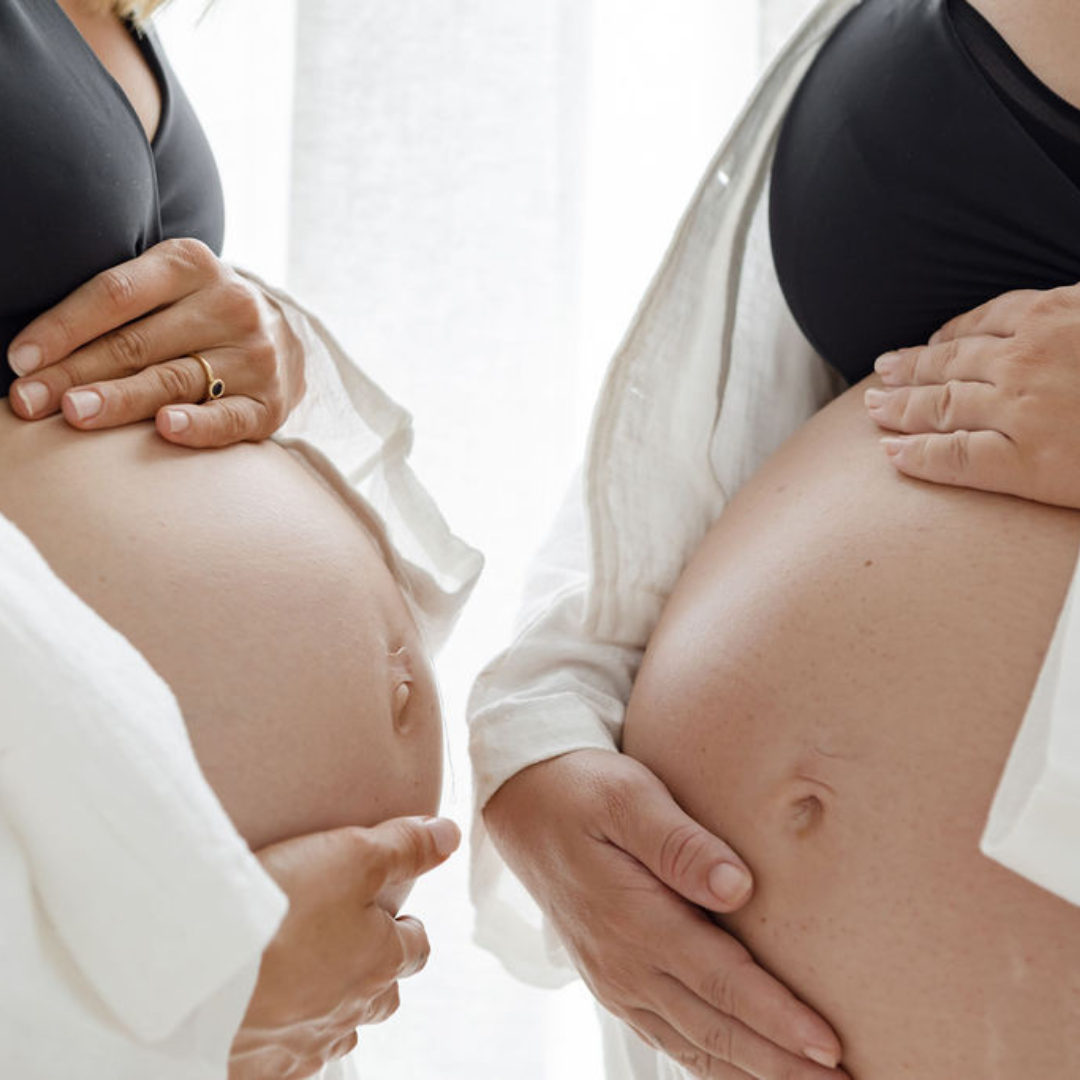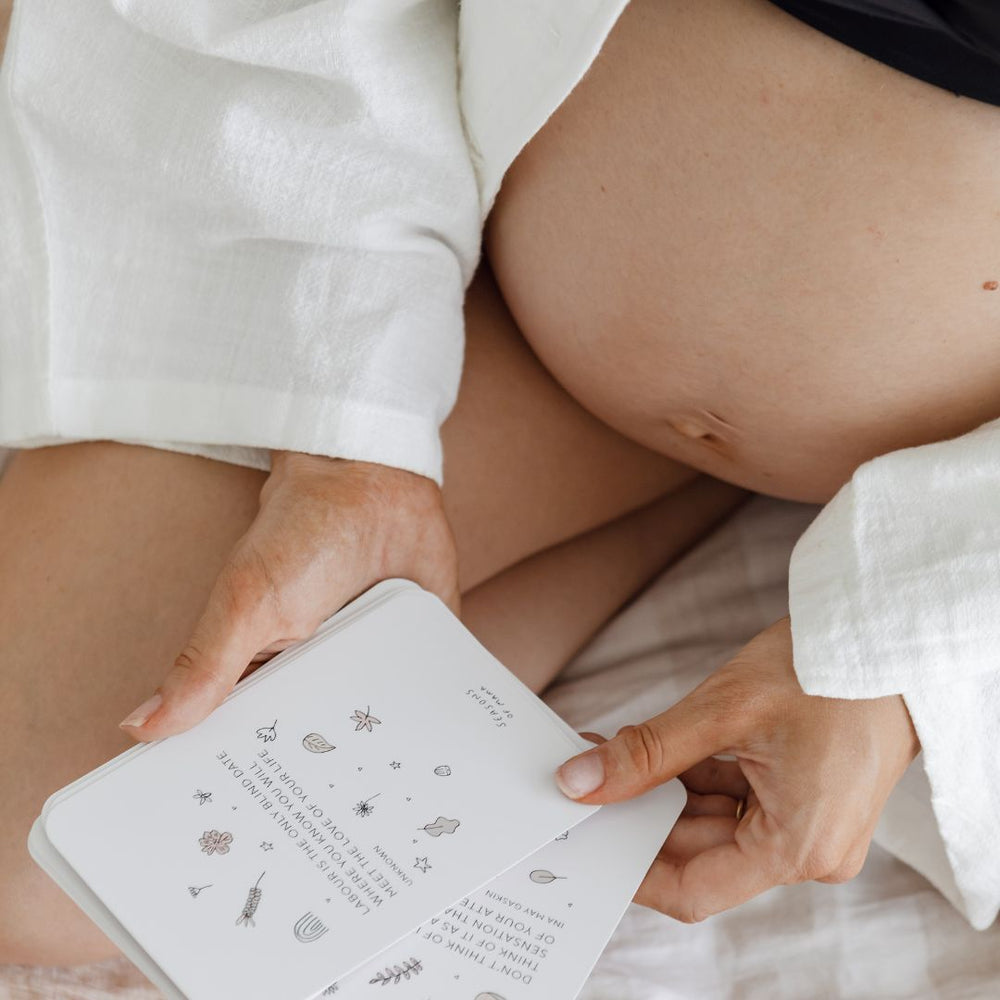Congratulations mama, you’re almost there! Entering your third trimester of pregnancy can be both relieving and anxiety-inducing all at the same time, but as always, we’re here for you. With the help of your own village and professional medical team, here’s a little bit about what to expect in the third trimester.
How many weeks are in the third trimester?
Your third trimester will start when you’re 27 weeks pregnant and go until your little one arrives in the world, which could be as long as 15 weeks. While the gestational calendar marks 40 weeks as the length of pregnancy, most babies in Australia are born between 37 and 41 weeks, which is considered term. Babies born between 39 and 42 weeks are classified as full-term, while those born earlier than 37 weeks are premature. Most medical teams will opt to induce you (with your permission) if you pass the 42-week mark and go post-term.
What are common third-trimester symptoms?
As your due date approaches you may find yourself becoming more and more uncomfortable. Your baby is growing rapidly, and so are you mama!
If it hasn’t already, the extra pregnancy and water weight will become more noticeable as you go about your everyday business, so this is your permission to take it slower when and where you can. Those symptoms you might have already been feeling in the first or second trimesters, like back pain, round ligament pain, heartburn, shortness of breath, and the urge to pee more often, may also ramp up during trimester three. Nausea usually isn’t a symptom of the third trimester, so if you are feeling sick and vomiting a lot, make sure you chat with your medical team to discuss the possibility that you might have Hyperemesis Gravidarum (HG) if you haven’t been diagnosed earlier.
As you get closer to delivery you might find that increased blood circulation causes more spider or varicose veins over your body, though this redness typically fades after birth. Larger stretch marks may also begin growing around your stomach and breasts.
Finally, Braxton Hicks contractions might be helping your body prepare for the real deal. These are irregular contractions and may stop if you change position or move around. But like anything, if it feels unusual or you’re concerned, chat with your pregnancy care team to make sure everything is ok.

H2: What happens during the third trimester of pregnancy?
Third-trimester baby development is continuing rapidly to prepare baby for the outside world. Their brain, kidneys, and lungs continue to develop and mature, and they can now see and hear. If you haven’t already started, the third trimester is a great time to chat, read, or even sing to your future newborn as they start to hear (and recognise!) your voice.
For dads and partners, now might be the time you can finally feel baby on the outside too, as those third-trimester baby movements of kicks, punches, rolls, and even hiccups become more noticeable through mama’s stomach. Sorry mum-to-be, they’re also going to become more uncomfortable for you! Keep a feel on these movements as one of the best ways to monitor how baby is going in the third trimester is by how active they are. So, while you might not enjoy baby having those nighttime aerobics, it’s a good sign things are going well. Contact your GP or pregnancy care team if you feel a decrease in movement at any time.
During the last few weeks of pregnancy, most babies will start to turn downward, and the head may engage and drop into the pelvis area in preparation for birth. This process of ‘lightening’ can happen by week 36 and may increase the need to pee more often.
Your body is also developing with baby, in particular your breasts. Colostrum can start coming in from 20 weeks, but you may find that you start to leak more during the third trimester. Now is the time to start thinking about your baby’s feeding journey and whether you want to express this colostrum in preparation for after birth, which should be done no earlier than 36 weeks.
You may also find you have increased vaginal discharge and swelling of the hands, face and feet as you get closer to the big day and retain more of that water weight.

What to do during the third trimester
Like every stage of pregnancy, sometimes it can be hard to know what to avoid in the third trimester. So, here’s a list of common third-trimester questions to help guide you through the final stages of your pregnancy.
How to sleep during the third trimester of pregnancy
As your uterus continues to grow, we suspect you won’t be trying to sleep on your stomach anytime soon! But sleeping on your back during the third trimester should also be avoided. Research shows that you can modify, or even halve, the risk of stillbirth by sleeping on your side, particularly from 28 weeks onwards.
What can’t I eat during the third trimester?
Your third-trimester diet will remain similar to your first and second trimesters. Avoid anything with a high listeria risk, such as deli meats, sushi, soft cheeses, raw meats, or salad bars.
What exercises are safe during the third trimester?
You may be feeling like it’s time to dial down the exercise anyway, but if you want to keep yourself active it’s time to give up the high-intensity activities. Lower-impact exercises like walking, swimming, yoga, and gentle pilates will be gentler on both your body and baby during this time. Of course, chat with your medical care team to make sure that any exercise you’re sticking with is right for you.

Can I take a bath in the third trimester?
Yes! Soaking in a bath may be a great way to ease those aches and pains in the final stages of pregnancy, but there are a few rules attached. Make sure the water isn’t too hot and be mindful of any warning signs such as nausea, dizziness, or discomfort.
Can the third trimester make you sick?
While most women will feel uncomfortable during the third trimester, it usually doesn’t make them feel ill. So, if you’re experiencing high volumes of nausea and vomiting, it’s definitely a sign to check things out. HG, which might have been brushed off earlier during your pregnancy, is always something to be mindful of if you’re not feeling as well as you should be. Find out more about HG at Hyperemesis Australia, on the Journal, or on the You, Me & HG podcast.
Should you stop travelling in the third trimester?
If you’ve been cleared by your GP, travelling before 36 weeks of pregnancy is generally allowed. So, if you want to sneak that babymoon in, chat with your GP about the best time for you to travel as well as any risks involved (such as DVTs).
Third trimester for dads and partners
Partners, now is the time to ramp up your support for mum (if you haven’t already). Helping out around the house or taking care of other kids or pets can go a long way in taking the load off an already overloaded body.
Be prepared to attend childbirth classes, help with setting up nurseries, pack hospital bags, and make sure you’re aware of mama’s birth plan or preferences for when the big day arrives (just in case she’s not able to deliver her wishes herself). If you’re also planning on driving mama to a hospital birth, planning and even timing the best route during different times of the day can also come in handy.

Third-trimester to-do list
Things are ramping up, and now is the time to get all those extra pre-baby admin tasks out of the way. Setting up the nursery and having the car seat installed with plenty of time before birth will help take your mind off you (or your partner!) having to put together flatpacks in the middle of the night.
Now is also the time to get serious about your pre-birth plan, preferences, and education. Particularly if you’re expecting for the first time, take a look at what childbirth course your hospital offers if you’re interested in more education that will be specific to your circumstances, or chat with your midwife about where you can get more education if you’re having a home birth.
We also recommend starting to pack your birthing or hospital bag around week 30, to make sure you’re ready in a pinch as you ease into the third trimester. Download our free labour, birth and postpartum checklists to set yourself up with everything you need.
Finally, whether you’re having a baby shower or not, take a look at what items you need (or just want!) and add them to your baby gift registry. Get ideas or create your own with our sister site biglittlegifting.

Third trimester visits
Whooping cough vaccine while pregnant (between 20-32 weeks)
The whooping cough vaccine is offered for free for all parents to be (including partners) under Australia’s National Immunisation Program. It can be administered in the second or third trimesters between 20 and 32 weeks and immunises against whooping cough, diphtheria, and tetanus.
Oral Glucose Tolerance Test or OGTT (between 24-28 weeks)
If you didn’t already do your OGTT towards the end of the second trimester, the first few weeks of the third trimester are the time to get it. This helps detect your risk of Gestational Diabetes and is usually covered by Medicare (to some extent).
Group B streptococci or GBS test (around 36 weeks)
Towards the second half of the third trimester you’ll be offered a swab test for GBS. GSB is a vaginal bacterium that can sometimes transfer to your baby during delivery and cause an infection. The test is a take-home swab that you can return to your local pathology centre for the results. If you’re positive for GBS, you’ll be offered antibiotics during labour to reduce the risk of infection to your baby.
Ongoing health checks (every 2-4 weeks becoming more frequent as you get closer to your due date)
Third-trimester visits to your pregnancy care team will get more frequent the closer you get to delivery. These check on how both you and baby are doing, weighing you, measuring baby to make sure they’re growing properly, checking your blood pressure, testing your urine, and checking in on baby’s heartbeat. Ultrasounds will be offered if additional checks need to be made, such as a closer look on baby’s size (too large or too small) or checking what position baby is in before birth.

Your pregnancy journey may come with its highs and lows, but it’s nearly over mama. So enjoy what you can, where you can (and if you can), and get ready for your new bundle of joy to arrive soon. We’re so excited for you mama!
Still got a little way to go? Read up on what you can expect in the first trimester and second trimester.
Ready to pack your hospital bags? Let us help you be prepared.



